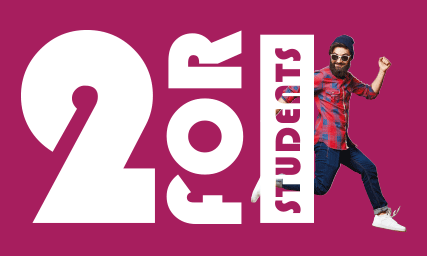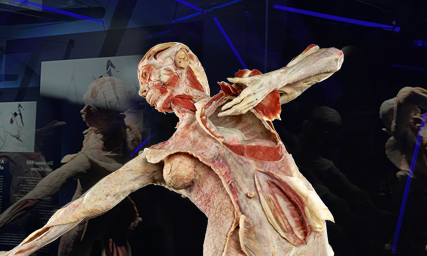Berlin
TV-Tower, Alexanderplatz
Berlin
BODY WORLDS Museum
FR:EIA - The world's first Human 3-D Fascia Plastinate - Now at the BODY WORLDS Museum in Berlin!
---
The BODY WORLDS Museum gives insights into the highly complex structures of the human body and shows what connects us, keeps us upright and in motion, and what makes us laugh and love.
Moreover, the Museum opens the visitors' eyes to various facets that determine our existence:
HAPPINESS & UNHAPPINESS
The pursuit of happiness and love dominate our lives. But what determines whether we are happy or not?
EXCESS & MODERATION
Modern life is comfortable. Yet at the same time, we long for a perfect body, vitality and health. How can we find the right balance?
PRESSURE & RELEASE
Too much pressure is bad for body and mind. How can we resist and refuel our body?
GLUTTONY & RESTRAINT
What our body needs for a long, healthy life often contrasts with how we feed it. What can our body bear?
CHANCE & DESTINY
Life is a mystery. Humanity has always been fascinated by the question of where we come from. What determines whether we are alive and healthy?
opening hours
Daily
tickets
(upon presentation of student ID. Only at the box office.) 16 €
*Only with valid identification: Students up to age 30, Seniors 65+, apprentices age 18+, individuals with disabilities.
Free Admission: Children under the age of 7, teachers and legal trainees, attendants of individuals with disabilities (label B - valid only in connection with a paying person.) and body donors to the IfP (upon presentation of donor ID card).
It is valid: The possibilities of the free entries are not combinable among themselves.
Specials
Audio-Guide
Listen and Learn! Design your exhibition visit according to your personal interest. The Audio Guide tour is available in English and German. The audio guide is available in German and English and can be obtained at the ticket office for a rental fee of 2.50 €.
NEW: Free Audio-Tour
Use your smartphone in our free WLAN. Scan the QR-Code at the counter and start the tour (no download needed). The free tour is available in English and German. Please take other visitors into consideration and use your headphones.
Schools
Please reserve tickets for school groups by phone: +49 (0)30 847 1255 23 or email: berlin@koerperwelten.de. Teachers and student teachers (with verification) get free admission.
Free admission available for
Teachers and student teachers (with valid verification), companions of disabled person, body donors of the Institute for Plastination (with donor ID card), children up to 6 years of age.
Flex-Ticket
You are looking for a suitable gift? The Flex-Ticket allows the entry for any day without reservation. The gift voucher is neither date nor time bound. The perfect gift!
Online Ticket
Purchased online tickets must be presented at the box office for validation.
The exhibition is barrier-free and air-conditioned.
Address & Directions
Plan your visit
Address
Directly at the TV-Tower
Panoramastraße 1A
10178 Berlin
You will find the exhibition in the basement of the TV-tower. Leaving the train station heading towards the TV-tower, you will have to walk around the building to find the entrance on the opposite side of it.
Coming from the “Museumsinsel” (Museum Island) you will find the entrance right behind the “Neptunbrunnen” (Neptun’s fountain).
Public Transport
We recommend using the public transportation, since parking space is rare and expensive. The Station Berlin Alexanderplatz is close to the exhibition and hosts many Metro- Bus- and street train lines. Please find the best connection at BVG.
events
& current
- overview
- opening hours
- tickets
- Directions
- events & current
- visitor statements








